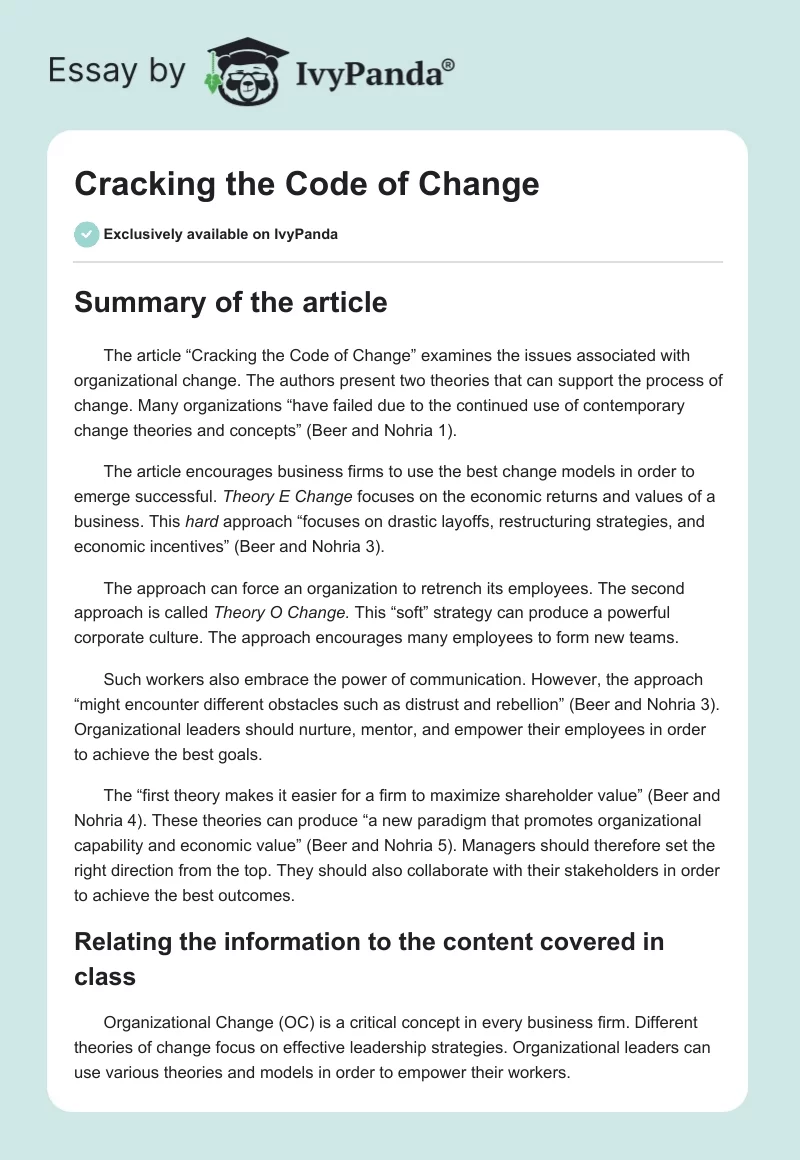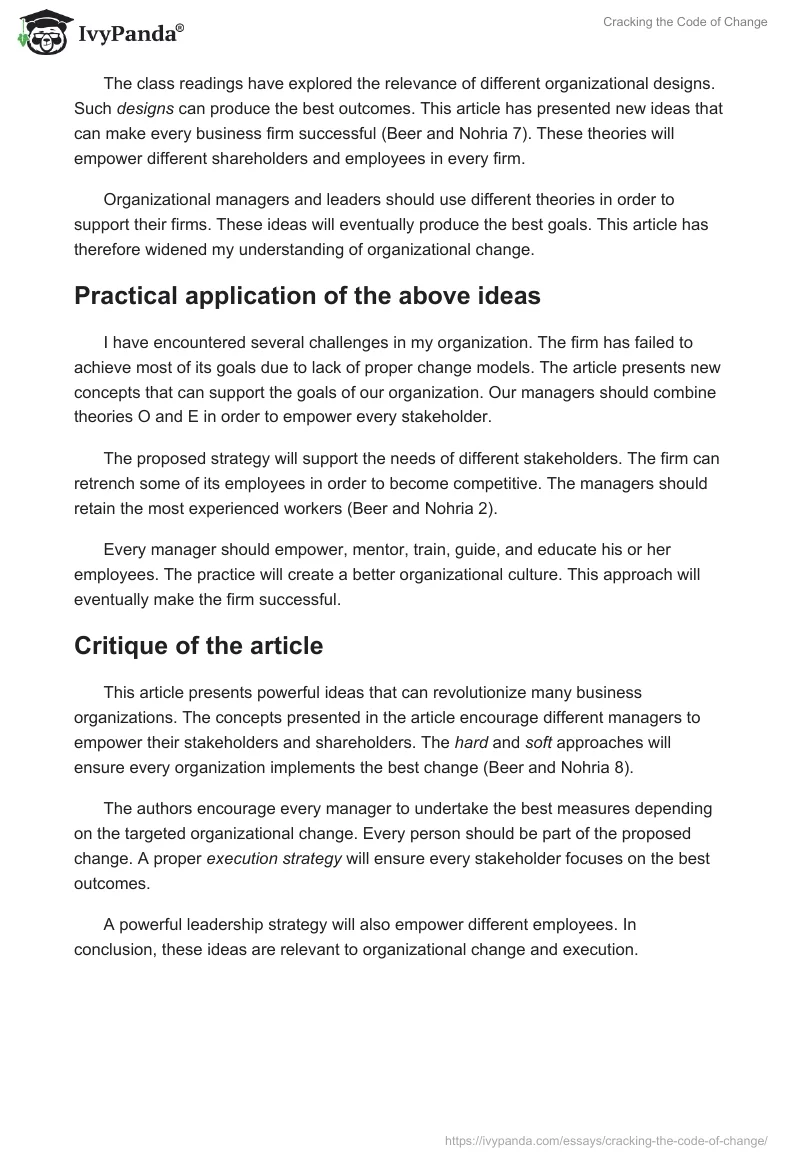Summary of the article
The article “Cracking the Code of Change” examines the issues associated with organizational change. The authors present two theories that can support the process of change. Many organizations “have failed due to the continued use of contemporary change theories and concepts” (Beer and Nohria 1).
The article encourages business firms to use the best change models in order to emerge successful. Theory E Change focuses on the economic returns and values of a business. This hard approach “focuses on drastic layoffs, restructuring strategies, and economic incentives” (Beer and Nohria 3).
The approach can force an organization to retrench its employees. The second approach is called Theory O Change. This “soft” strategy can produce a powerful corporate culture. The approach encourages many employees to form new teams.
Such workers also embrace the power of communication. However, the approach “might encounter different obstacles such as distrust and rebellion” (Beer and Nohria 3). Organizational leaders should nurture, mentor, and empower their employees in order to achieve the best goals.
The “first theory makes it easier for a firm to maximize shareholder value” (Beer and Nohria 4). These theories can produce “a new paradigm that promotes organizational capability and economic value” (Beer and Nohria 5). Managers should therefore set the right direction from the top. They should also collaborate with their stakeholders in order to achieve the best outcomes.
Relating the information to the content covered in class
Organizational Change (OC) is a critical concept in every business firm. Different theories of change focus on effective leadership strategies. Organizational leaders can use various theories and models in order to empower their workers.
The class readings have explored the relevance of different organizational designs. Such designs can produce the best outcomes. This article has presented new ideas that can make every business firm successful (Beer and Nohria 7). These theories will empower different shareholders and employees in every firm.
Organizational managers and leaders should use different theories in order to support their firms. These ideas will eventually produce the best goals. This article has therefore widened my understanding of organizational change.
Practical application of the above ideas
I have encountered several challenges in my organization. The firm has failed to achieve most of its goals due to lack of proper change models. The article presents new concepts that can support the goals of our organization. Our managers should combine theories O and E in order to empower every stakeholder.
The proposed strategy will support the needs of different stakeholders. The firm can retrench some of its employees in order to become competitive. The managers should retain the most experienced workers (Beer and Nohria 2).
Every manager should empower, mentor, train, guide, and educate his or her employees. The practice will create a better organizational culture. This approach will eventually make the firm successful.
Critique of the article
This article presents powerful ideas that can revolutionize many business organizations. The concepts presented in the article encourage different managers to empower their stakeholders and shareholders. The hard and soft approaches will ensure every organization implements the best change (Beer and Nohria 8).
The authors encourage every manager to undertake the best measures depending on the targeted organizational change. Every person should be part of the proposed change. A proper execution strategy will ensure every stakeholder focuses on the best outcomes.
A powerful leadership strategy will also empower different employees. In conclusion, these ideas are relevant to organizational change and execution.
Works Cited
Beer, Michael and Nitin Nohria. “Cracking the Code of Change.” Harvard Business Review 1.1 (2000): 1-10. Print.


